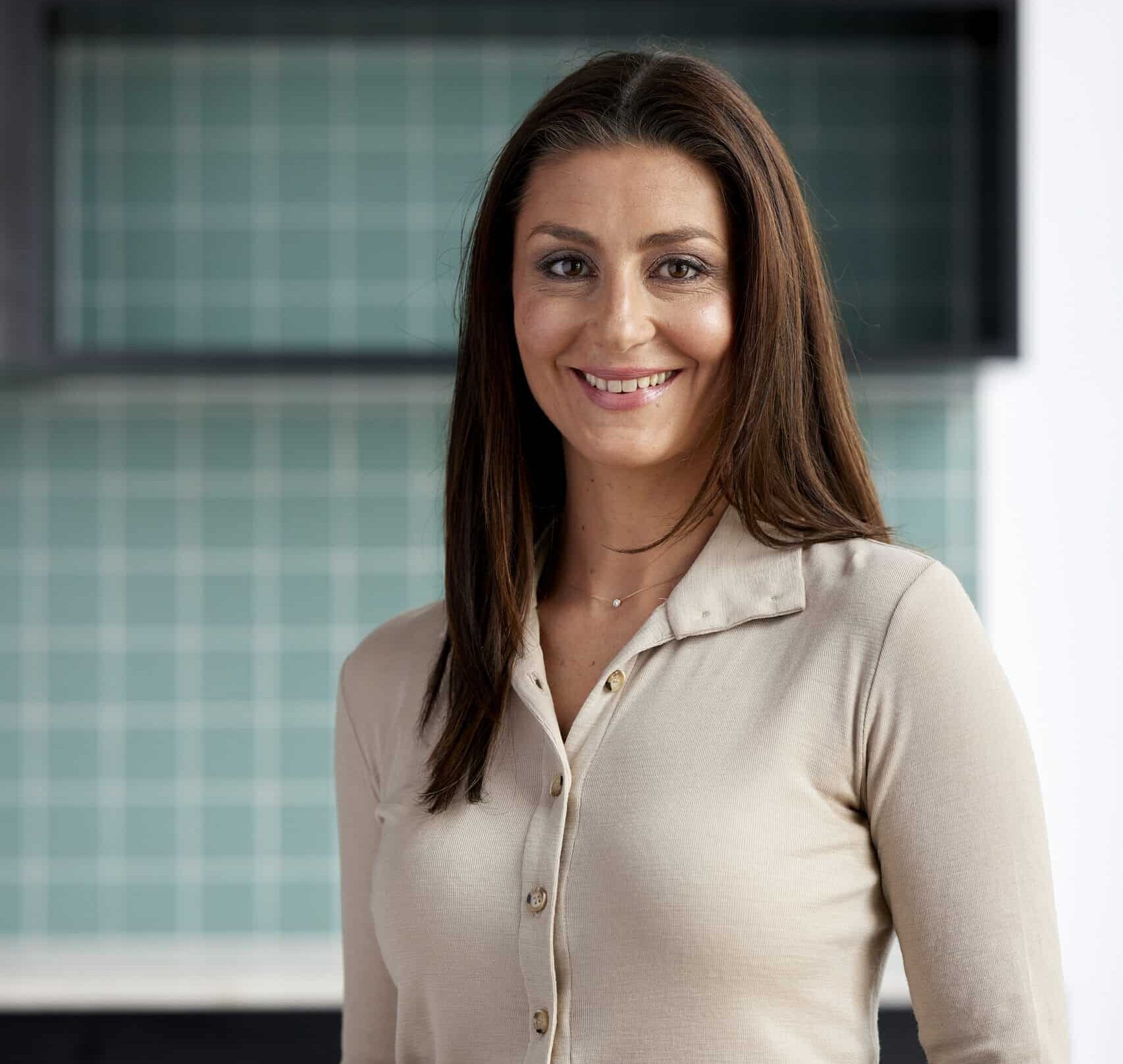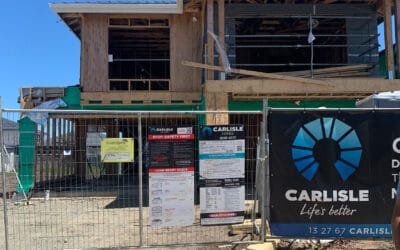As a BuildHer, you’ve likely gone through the process of organising finance for a property purchase before. However, the lending environment can change quite quickly throughout the year. Entourage Finance broker and BuildHer Collective partner Leah Ziskos takes us through the basics of mortgages in 2023.
Deposits
Whether you’ve bought before or not, when buying property you’ll be required to contribute to the purchase costs. You can choose to fund this in a couple of different ways depending on your financial structure.
If you have cash savings you may choose to contribute this to your property purchase. This is how most first home buyers do it, through cash savings or gifted funds from a family member.
If you have an existing property you might choose an equity release. This is where you redraw or top up your existing loan to contribute towards your next purchase. More on this in our next article.
How much deposit do you need when it comes to purchasing an investment property? We usually recommend a 20% deposit plus costs to ensure you don’t have to pay Lenders Mortgage Insurance (LMI) which can be very expensive. Lenders Mortgage Insurance is the premium paid to the lender’s mortgage insurer and it protects the lender (not you) in the event that you default on your loan.
If a great opportunity arises and you don’t have a 20% deposit then LMI can provide you with the means to acquire the property with a lesser deposit. This is common for first home buyers, it gets them into the market and gives them the opportunity to start building their asset base with a lower barrier to entry.
Once you’ve got your deposit sorted, the next question is how much will the bank lend you?

How is borrowing power calculated?
Borrowing power is how much the bank is comfortable lending you, based on your current financial situation. Since interest rates began rising in May 2022, borrowing power has reduced by as much as 30%. If you could borrow $1,000,000 previously, your maximum lend would now be $700K (assuming no other changes to your situation).
So how do the banks calculate what they will lend?
Many people think borrowing power is based only on income. More income equals more borrowing. Whilst income is a big factor, it’s not the only one. Here is a list of other factors which impact borrowing power:
- Income
- Living Expenses
- Dependants
- Existing Loans
- Other Debt (like HECS)
- Credit Cards Limits (not just the outstanding balance)
- Overall Debt to Income Ratio
- Current Interest Rate
- Making principal and interest repayments versus interest only
- Assessment Rate
The biggest single change I’ve seen over recent years is living expenses. Lenders are asking for borrowers to account for all their expenses and not just taking it off the average (known as the HEM).
Another big one is HECS. Especially since HECS repayment thresholds and rates have increased, which in turn increases your monthly commitment to repay this liability. Your HECS liability is calculated using your income, rather than the actual balance you have owing. So the higher your income, the higher your HECS liability repayment.
It’s also important to note that different lenders will apply different weightings to the above factors. Which means lenders will offer different loan amounts based on their internal assessment process and risk appetite.
So now we know what to look at when a lender assesses borrowing power, how can we increase this if necessary?
How can you improve your borrowing power?
In any situation, neither broker or bank is going to encourage you to put yourself in a position where you are stretched to your limit. A loan needs to be suitable for you and your lifestyle, this is why serviceability exists. To ensure you are not borrowing more than you can repay.
That said, there are ways you can improve your maximum borrowing power within the limits of the lending architecture.
Reducing your existing debt is the best way to go about this. Did you know reducing a credit card limit by $20,000 can increase your borrowing capacity for a property by almost $100,000. This is because lenders look at the limit you have, not what is owed on the credit card.
Reducing your living expenses is another great way. Things like negotiating your insurance premiums, utilising rewards points and programs and swapping energy providers can help. Along with things like reducing your discretionary spending too. This includes all those non-essentials like eating out, holidays and the like in the lead up to applying for the loan.
Increasing your income. Of course, if it were as easy as that we’d all do it! For some people who are self-employed it might mean reducing deductions to boost earnings. For those who are employees, asking for a pay-rise or starting a side-hustle. If you do decide to moonlight as an Uber driver, most lenders will want you to demonstrate 1-2 years’ proof of income before the bank will use it.
Buy with a partner. If you’re buying an investment property, buying with another trusted person may be a good solution. This could be a family member, business partner or friend. Seeking legal advice prior to commencing will be important, this protects yours and their interests and sets out the terms of the relationship from the beginning.
Once you know how much the lender is prepared to offer, the next step is to get a pre-approval in place to allow you to negotiate or bid confidently.
Pre-approval prior to property hunting
There are few things in life more stressful for a mortgage broker than a client who is bidding at auction without a pre-approval. Auctions are final and if you are the successful bidder, you need to pay your deposit on the spot.
During private negotiation, even without a pre-approval, the buyer is able to make the offer Subject to Finance Approval which ensures a level of protection in the event the lender isn’t prepared to approve the loan (or if they offer a lesser amount than is required to complete the sale).
A pre-approval provides you with peace of mind that the lender has looked at your actual financial situation (not just a rough one input in a serviceability calculator), completed a credit assessment which includes a credit check and a peek at your expenses too. If they are happy with how everything looks, then you’ll receive your pre-approval (also known as conditional approval).
There are two types of pre-approval. A desktop pre-approval is based on the information input into an online calculator which will often include a credit check, but is not actually assessed by a person at the lender.
A fully assessed pre-approval is just that. A thorough look at your situation including payslips, bank statements, debt and credit statements, credit check and identification. If you receive a fully assessed pre-approval you can negotiate and bid with confidence, knowing the lender has looked at everything and approved you subject to the property being acceptable.
Handling interest rate rises
Of course, there’s a lot more to the lending process. But once you’ve purchased the property, loan and settled you’ve got the not insubstantial job of paying off the loan. Navigating interest rate rises is going to be a key part of this.
Whether you opt for interest only or principal and interest, the current economic environment has meant all borrowers are seeing regular rate increases.
What’s the best way to get ahead of interest rate rises?
Making extra repayments is the single best thing you can do. This might be directly onto the loan itself or into an offset account. For example, on a $550,000 loan with an interest rate of 5.99% making an extra $250 per month repayment will reduce the overall loan term by around 5 years saving over $125,000 in interest. If the same person put $50,000 in their offset account it would reduce the loan term by over 8 years and save them over $268,000 in interest.
Of course, the interest rate is not going to stay at 5.99% forever however it may average out around this rate if we look at historical rates in Australia. The average variable mortgage rate for the last 30 years is 6.87% which is skewed a little due to the 15.50% rate in 1990. If you look at the last 20 years, the average variable mortgage rate is 5.96%.
Working with a mortgage broker is another good option. They will review your lending annually and let you know if a better rate is available with your current lender or with a competitor, in which case they may recommend a refinance.
We’ll talk more about refinancing another time. But be mindful when you refinance when it comes to the loan term. If your intention isn’t to reset your loan term then make sure you have this discussion with your broker. In some instances, this is appropriate and at other times you will want to ensure your loan term is the same.
That’s all from me for this edition, I’ll be back next time to talk more specifically about construction finance. Until next time BuildHers.
By Leah Ziskos
Things you should know: this article doesn’t consider your individual objectives, financial situation or needs. Before basing any decisions on this information please consider its appropriateness to your circumstances and consider obtaining professional advice specific to your needs. This may include financial, taxation and legal advice.








